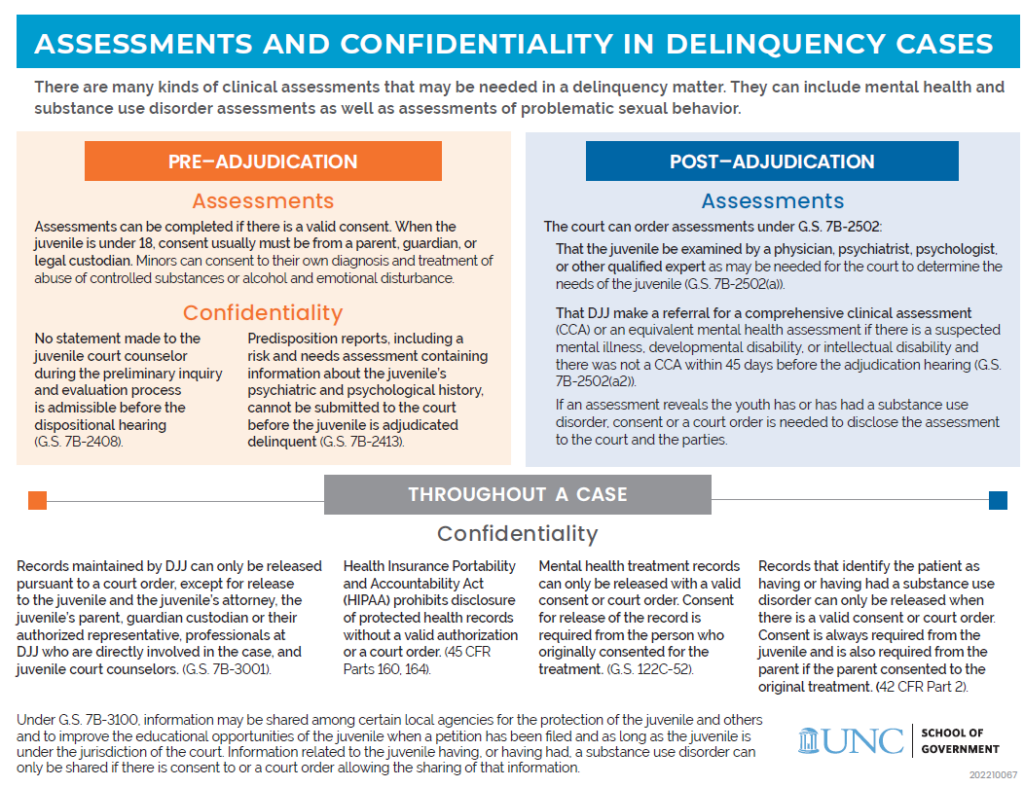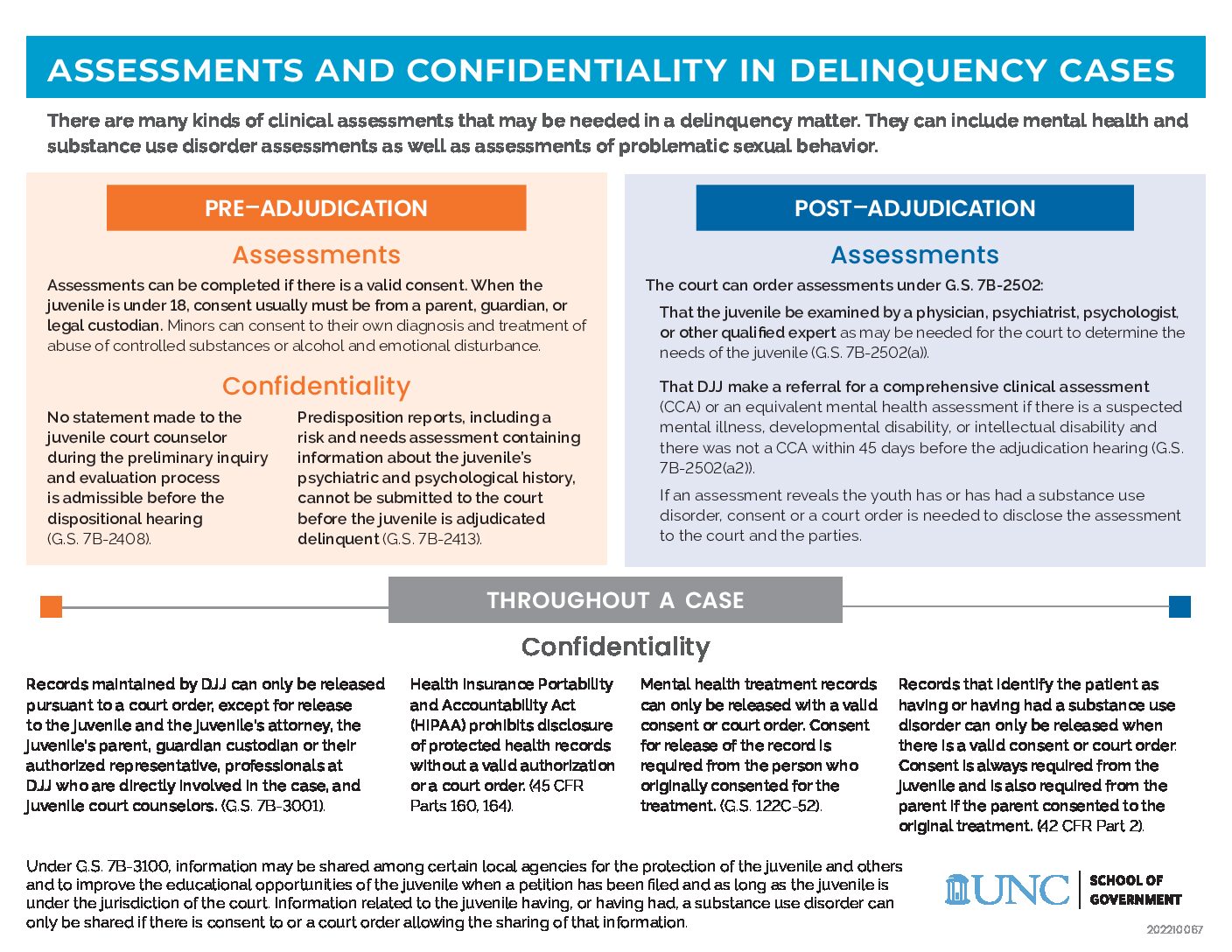The current news seems to be full of reports of threats against schools. A search of the WRAL website for stories on school threats reveals at least five discrete stories on threats against North Carolina schools in May alone. How can schools and law enforcement be prepared to respond to, and perhaps even prevent, threats against student safety? The National Threat Assessment Center of the United States Secret Service (NTAC) has been researching that topic for over 20 years. The results are consistent. Schools that have an effective threat assessment structure in place, casting a wide net to effectively identify youth along a continuum of need and offering a range of responses, are best positioned to address threats and prevent school violence.
 Jacquelyn Greene
Jacquelyn Greene
Determining Disposition Level in Delinquency Cases
Determination of the correct disposition level available in a delinquency case requires a four-step process.
- Identify the offense for which disposition is being entered (hereinafter referred to as the “disposition offense”).
- Identify the offense classification for the disposition offense.
- Calculate the juvenile’s delinquency history level.
- Use the disposition chart to identify the corresponding level or levels for the case.
Is There a Deadline for Ordering a Disposition in a Delinquency Case?
The short answer is no. There is no specific legal requirement to enter a disposition in a delinquency matter in a certain period of time. At the same time, the law does provide some context on moving efficiently to disposition, including the ability, in certain circumstances, to appeal an adjudication before a disposition has been entered. This blog explains that context.
Juveniles and the Law of Impaired Driving
What law applies when a juvenile is suspected of impaired driving? If the juvenile is 16- or 17-years-old, the criminal law applies in the same way that it applies to someone aged 18 or older. These offenses are carved out of juvenile jurisdiction (G.S. 7B-1501(7)b.) They are therefore criminal matters from their inception. However, if the juvenile is under age 16 at the time of the offense, the case is a juvenile matter from its inception. This blog explains how cases alleging impaired driving under the age of 16 should proceed pursuant to the Juvenile Code.
Nontestimonial Identification Orders in Delinquency Matters
The law that governs the use of nontestimonial identification procedures in delinquency matters is markedly different than the law that governs use of these same procedures in criminal matters. The Juvenile Code requires a court order prior to the use of most nontestimonial identification procedures, a nontestimonial identification order (NTO) can only be issued in relation to felony charges, there are specific statutes that govern the destruction of resulting records, and the willful violation of the juvenile NTO statutes carries a criminal penalty. This post describes when NTOs are needed, and the procedure that must be followed to obtain them, in matters under juvenile jurisdiction.
Assessments in Delinquency Cases: When Can They be Done and Are They Confidential?

One of the unique features of the juvenile justice system is its statutory focus on identifying the needs of juveniles and resolving matters to provide “appropriate rehabilitative services to juveniles.” G.S. 7B-1500(2)b. In addition to protecting public safety, dispositions should include “an appropriate plan to meet the needs of the juvenile.” G.S. 7B-2500. The caselaw and statutes that govern one form of assessment in delinquency cases—the comprehensive clinical assessment (CCA)—have undergone rapid change in the last few years. Other assessments, such as assessment for problematic sexual behavior or trauma-focused assessments, may also be needed in certain cases. Questions abound regarding when assessments can occur and what confidentiality law applies to them. This new infographic provides a high-level overview of the law that addresses these questions.
Violation of an Undisciplined Court Order Resulting in Delinquency Adjudication
Is it legally permissible to adjudicate a juvenile delinquent based on that juvenile’s violation of an order for protective supervision in an undisciplined matter? The North Carolina Court of Appeals says yes. The court upheld the practice of adjudicating a juvenile delinquent following an admission to indirect contempt related to violation of an order issued in an undisciplined case in In re B.W.C., 2022-NCCOA-590 (September 6, 2022). This post details the court’s holding and explores ramifications of the decision.
New Juvenile Law Bulletin on Juvenile Interrogation
What circumstances constitute custodial interrogation in a school setting? Who counts as a guardian or custodian for the purpose of a custodial interrogation of a juvenile? Under what circumstances can a juvenile waive their rights that attach during a custodial interrogation? A new Juvenile Law Bulletin on Juvenile Interrogation is now available as a School … Read more
Procedure in Juvenile Homicide Cases
How does a case proceed when a juvenile is charged with a homicide offense? In classic lawyer fashion, the answer is that it depends. In almost all instances, the case will begin as a juvenile matter. However, the path the case follows once the juvenile case begins, and whether the case is ultimately adjudicated as a juvenile matter or prosecuted as a criminal matter, depends on the age of the juvenile at the time of the offense and the specific offense charged.
Juvenile Sight and Sound Separation in Court Holding Facilities
The legal requirement for sight and sound separation between juveniles and adult inmates states that “juveniles alleged to be or found to be delinquent or juveniles within the purview of paragraph (11) will not be detained or confined in any institution in which they have sight or sound contact with adult inmates.” 34 U.S.C.A. §11133(a)(12)(A). It may be somewhat intuitive to understand how this requirement applies in settings where adults are detained for long periods of time—such as jails and lockups. The application of this requirement in court holding facilities may be less intuitive. This post explains how sight and sound separation applies in the context of the courthouse.
